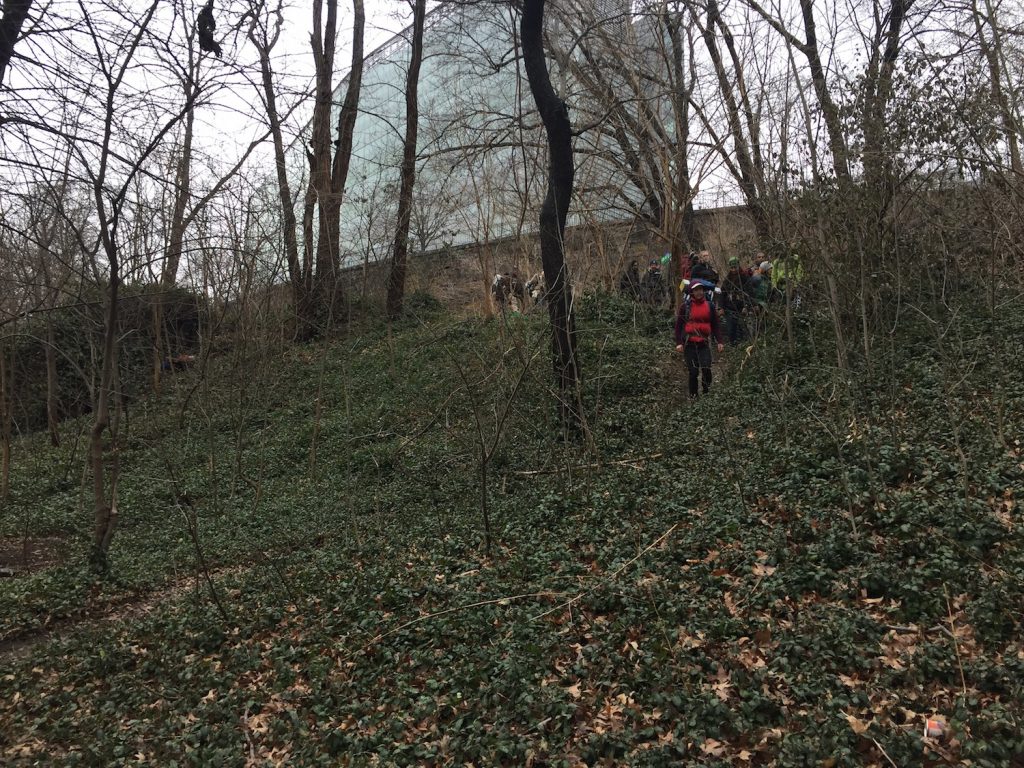I included the phrase “inoperative ecology” in my previous post thinking of Jean-Luc Nancy’s idea of an “inoperative community”. In the book by that name he brings up an idea of a community-revealed-in-death (as opposed to one constructed-as-a-project). The project he is initially referring to is a larger societal one, communism, though it can be extended to other purposeful social structuring. Nancy notes a seemingly universal sense of loss and nostalgia around the notion of community: a sense that we have fallen out of a real communal existence somewhere in the past and into the disharmony of our sticky modern situation. The lost closeness and tragedy of separation is particularly connected to a Christian idea, the sharing of a body. Nancy dispels the notion that such a pure state ever existed, instead insisting that community is only what happens to us when we are faced (and particularly lose a member to) the limit of social existence– existence in general– the black gulf of death. Community in this sense does not happen pre-emptively, or as a result of a social intention. And while he is speaking of human existence, we might look to a nostalgic image of St. Francis surrounded by animals, or an unsullied tribe in the rainforest living in harmony with nature to relate the idea of mythic lost community to a mythic lost ecology. It’s the sense of a community arising without a plan, out of necessity, and somewhat in condolence, that is helpful for my thinking through one meaning for our shared coyote walk. An inoperative ecology might describe a way of seeing piecemeal solutions and compromises the new natural world, one that is already flawed, impure. A mystery of human-animal relations revealed in death. For us, retelling of the story Hal the NYC coyote (who died after entering New York City) is a tool towards articulating the central condition of the project. In the three days of walking for/with/parallel to the animal new connections (a community? an ecology?) may or may not form.
Images
The second night on the trail, after a long day, ending much later than planned, virtually finding a camping spot in the dark, holding together as a group under some degree of stress. People set up tents, eat hurriedly. One concerned walker asks for lights out, not wanting to be seen. In the darkness later, a bark. A bark that turns into a howl… I convinced myself I had finally crossed paths with this animal on this walk. But no one mentioned it the next morning. The consensus seemed to be that it was a dog after all. I feel a sense of nostalgia for the situation of the walk, knowing full well that we existed in a fairly exceptional, even unsustainable state.
Dreams
I have had dreams about this walk. Especially in the months leading up to it. My dreams usually have to do with some halting action to momentum. Leaving late, forgetting things, forgetting people, having to pause the walk for a period of days. The halting only emphasizes the power of the pull away. The action of leaving. I am writing these posts from Washington State, my new home having finally left the territory of the coyote walk.
References
Nancy, Jean-Luc, The Inoperative Community. Minneapolis: University of Minnesota Press, 1991.
Chance Ecologies curatorial framework focussing on undesigned and postindustrial landscapes New York, website.
